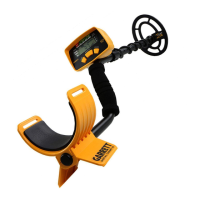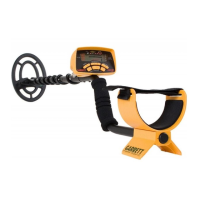16
Garrett Metal Detectors AT Max
™
17
Tone ID in Discrimination Modes
In either Custom, Coins, or Zero Mode, the Tone ID feature
produces up to three distinct audible tones based on a target’s
metal type and conductivity.
Low-Tone: Ferrous targets (Digital ID < 35) such as nails,
iron, steel, etc.
Mid-Tone: Non-ferrous targets (Digital ID of 35–75) with
low to medium conductivity, including small
jewelry, small coins, foil, thin targets, etc., and
ferrous targets that ID above the Iron Disc
setting.
High-Tone: Non-ferrous targets (Digital ID > 75) with medium
to high conductivity, including larger coins and
jewelry.
The AT Max's advanced audio characteristics provide fast recovery
speed, which is especially important in areas where good targets
are in close proximity or may be scattered amongst iron trash. (See
Example A.)
Example A: Adjacent targets can
often produce a single strong signal
with many metal detectors. The fast
recovery of the AT Max, however, will
provide two peaks of audio response
to these adjacent coins. These
multiple audio responses provide the
experienced user with more target
information.
This fast recovery time helps the AT Max operator to separate
adjacent targets. The proportional audio response which makes
this possible also allows the user to better judge a target’s size,
shape and depth. Proportional audio response means that the
loudness of the target's response is proportional to a target's
signal strength (i.e. small/deep signals sound faint and strong/
large signals sound loud). (See Example B.)
Adjacent
targets
Proportional Audio Characteristics
Shallow coin
Example B: Notice the
different target response
provided by the AT Max's
proportional audio in
regards to target depth.
The shallow coin target
offers a stronger signal,
while the same-sized
deep coin provides a
softer signal.
Deep coin

